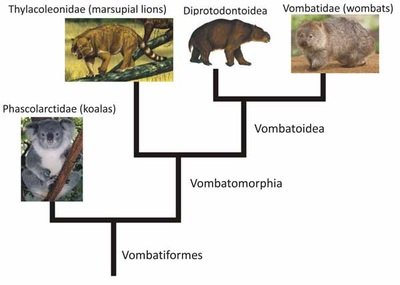
Now, you might be asking, “What makes koalas so special?” Well, for starters, their unique diet and lifestyle set them apart in the animal kingdom. They are not just adorable tree-climbers—there’s a whole world of evolution behind their big, round ears and sleepy demeanor. Let’s dive into their evolutionary history and discover how these charming marsupials came to be.
Koalas: A Brief Overview
Koalas are native to Australia and are often mistaken for bears. But here’s the thing—they’re not bears at all! They belong to a group of mammals called marsupials, meaning that they carry their young in pouches. Koalas are particularly known for their eucalyptus diet and slow, relaxed lifestyle. Their cute faces and fluffy bodies make them a global icon, but their evolution tells a story that’s anything but cuddly.
Koalas primarily feed on eucalyptus leaves, which are toxic to most animals. They’ve evolved a special digestive system with a large cecum and colon that helps detoxify these leaves, allowing them to thrive on a diet that would challenge many other species. This specialized diet shapes much of their behavior, including their low energy levels and the need to sleep for up to 18 hours a day to conserve energy.
The Ancestors of Koalas
To truly understand koalas, we have to go back in time—way back! The evolutionary history of the koala begins with their ancestors over 50 million years ago. During the Eocene epoch, different marsupials roamed Australia. These early ancestors were quite different from today’s koalas; they had varied diets and lived in different environments.
One of the most notable ancestors is the Diprotodon, a giant marsupial that lived during the Pleistocene era. Picture a massive wombat the size of a car! While Diprotodon isn’t directly related to koalas, studying such ancient relatives gives us clues about how marsupials adapted to their environments. Over millions of years, those adaptations led to the small, eucalyptus-loving koalas we recognize today.
The Unique Adaptations of Koalas
Koalas have developed several fascinating adaptations over time. Their sharp claws allow them to climb trees effortlessly, making them agile in their natural habitat. But that’s just the start. Koalas have relatively large brains compared to their body size, which might surprise you. This helps them navigate their social structures and communicate through various vocalizations—yes, they can sound like a baby crying!
Their fur is another crucial adaptation. The thick, woolly coat provides insulation from both heat and cold. Koalas live in a variety of climates across Australia, and their fur helps them regulate body temperature. You might think of this as nature’s way of crafting the perfect “coat” for these adorable marsupials.
Habitat and Distribution Changes
Over the years, the distribution of koalas has changed drastically. Originally, they roamed extensively across the continent, but due to habitat loss and human activity, their range has shrunk significantly. Here’s the kicker: this isn’t just about space. The two main species of koalas have adapted differently based on their environments.
The southern koala prefers cooler southern forests, while the northern koala is more adapted to warmer, tropical regions. With the ongoing threat of climate change and habitat destruction, koalas face challenges that require them to adapt even more rapidly than before. It’s a race against time where survival instincts are being tested.
Modern Koalas and Their Challenges
Today, modern koalas face numerous challenges that threaten their existence. Urbanization and land clearing have resulted in fragmented habitats. When populations are split, they can struggle to find mates and maintain genetic diversity, leading to health problems.
Additionally, climate change poses a significant threat. Changes in rainfall patterns affect the availability of eucalyptus trees, their primary food source. Drought can make these trees less nutritious, which impacts koalas’ health and survival rates. Honestly, these precious animals are in a precarious situation.
Conservation Efforts for Koalas
Fortunately, there’s hope for koalas. Organizations across Australia are dedicated to conservation efforts. These initiatives focus on habitat restoration, creating wildlife corridors, and raising awareness about the importance of protecting natural environments.
For example, some groups are collaborating with local governments to establish protected areas where koalas can thrive. Community programs also involve educating people about sustainable land use and how they can help koalas in their everyday lives. It’s inspiring to see dedicated individuals working toward ensuring that future generations can enjoy these amazing creatures.
The Future of Koalas
Looking ahead, the future of koalas can be both hopeful and uncertain. As conservation efforts gain momentum, there’s a possibility for populations to stabilize. However, it’s essential for everyone to play a part—whether through advocacy, education, or simply spreading the word about these unique marsupials.
The evolution of the koala is a beautiful journey filled with adaptations, challenges, and triumphs. By understanding their history, we can appreciate the responsibility we have to protect them. After all, every piece of the puzzle counts, and together we can help create a brighter future for our furry friends.
As we wrap up this deep dive into the evolutionary history of koalas, it’s clear that these creatures symbolize resilience and the delicate balance of nature. Let’s continue to support koala conservation efforts and ensure their wonderful story doesn’t end here.
